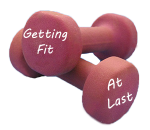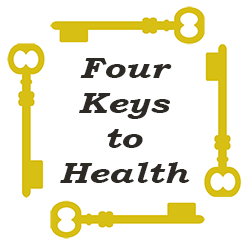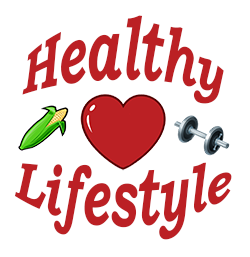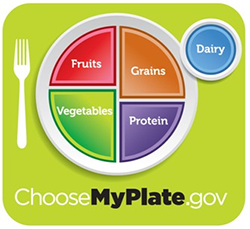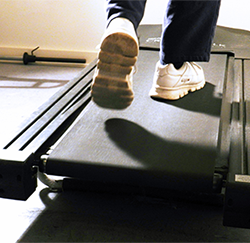You might think these four keys to health were the four secrets of good health if you didn’t know better. It is not that these health factors are unknown so much as that they so inadequately affect our decision making. Oh, we talk a lot about them, but our choices do not so often reflect our knowledge.
For that reason we need to focus our attention at some point on increasing our personal motivation to make good choices. But at the same time we do need to make sure we have a solid understanding of the underlying factors that affect our health.
Lifestyle Choices
Life is filled with choices. Unfortunately many of the options before us can lead to poor health. It is essential to recognize where the dangers are and decide purposefully to live in a way that promotes rather than detracts from good health.
Of course there are the more obvious threats to our health, the abuse of drugs, alcohol and tobacco. As far as drugs this includes the overuse of prescription drugs, a major health issue in America, as well as illicit ones. Along the same line are sexually transmitted diseases and the like. Naturally we need to avoid these risks.
Other lifestyle choices are less obvious. One of the more destructive health dangers for many folks is sedentary living, essentially being inactive too much of the time. Sadly, this begins at a young age all too often, so much so that childhood obesity has become a serious problem in America. Too much time watching TV or sitting at the computer often leaves our bodies in a weakened condition.
Of course there are social/psychological factors affecting our health as well. If work or personal environments are negative they can contribute to our mental health. If our mental health is poor, it can contribute to our physical health. According to the Mental Health foundation “depression has been linked to…67% increased risk of death from heart disease” and “50% increased risk of death from cancer.”
This is clearly not an exhaustive list. There are other dangers to health in our environment as well. Watch out for habits that seem minor or insignificant but can have long term negative affects. This can include using proper technique when lifting, safe methods of working with tools, and using the right precautions when handling chemicals like pesticides.
The idea to keep in mind is that we must individually examine our lives to see if there are elements of our lifestyle that are harming, or have a potential to harm, our mental or physical health. Determine to make any changes necessary to eliminate risks and increase healthy outcomes.
Adequate Sleep
An underrated contributor to poor health is improper or inadequate sleep. One reason for its prevalence is the inverted way most people seem to look at it. It is true that many diseases and injuries can contribute to sleep problems but in a very high number of cases inadequate sleep is a contributing factor in illness!
Deficient sleep contributes to diabetes, high blood pressure, obesity, accidental injury on the job and at home, heart disease, and the body’s ability to fight off infection among other things. We do not really need a longer list since these are quite formidable on their own, don’t you think!
Because lack of sufficient sleep also contributes to a general lack of energy it also contributes to our lack of motivation to stick with our eating and exercise plans. A lack of adequate sleep can lead people to say (in terms of an old saying you may have heard): my get up and go done got up and went.
While there is a basal need for around seven or eight hours of sleep for most adults, the precise need for sleep varies greatly. If you do not sleep well or get interruptions you may need significantly more. There are many other factors such as age and activity levels.
There are real risks associated with inadequate sleep. According to the National Sleep Foundation some of them are:
- Increased risk of drowsy driving
- Increase in body mass index–a greater likelihood of obesity due to an increased appetite caused by sleep deprivation
- Increased risk of diabetes and heart problems
- Increased risk for psychiatric conditions including depression and substance abuse
- Decreased ability to pay attention, react to signals or remember new information
Some of these were identified in the previous list, but note here the specific statement about obesity: a lack of sleep actually produces increased appetite! At the same time it reduces our attention and interest in our goals like exercise and diet. This is certainly relevant to our concerns on this website.
While not stated by these two sources, it is additionally my experience that sleep deprivation also reduces your emotional resistance to impulse eating. An unfortunate combination.
Healthy Eating Habits
If there is any topic more controversial than diet I would be hard put to name it. There are more opinions and theories about what constitutes healthy eating than a person can count, let alone understand or substantiate.
Nevertheless, there are some basics that we can all grasp and deal with. While some of the details may get a little fuzzy there is no question that few of us master the basics enough to worry too much about the details. Some of the finer points are indeed important to consider, but putting first things first we will find plenty to agree on and work on.
The Quantity of Food to Eat
In America the biggest problem with food is not the nutritional value of the food or the safety of the food, but the amount of overeating. Obesity has become a major health issue. It is an incredible statistic that has become common knowledge, a fact that may have diminished its gravity in our minds, but it is a serious matter that one-third of our population is obese.
And this is only the tip of the iceberg. Another one-third of our population is over-weight. In other words, two-thirds of our people eat too much food for their own good.
The root of the problem needs to be seen from two perspectives. The first is the actual volume of food we eat. Our culture has come to glorify overeating to a large extent. “All you can eat” buffets are extremely popular. Some restaurant chains are built around the concept. Many others, especially pizza parlors, promote certain days when they offer all you can eat promotions.
As a result people are in the habit of eating too much, too often. We used to do it once a year, at Thanksgiving. Now we do it on a regular basis. Overeating is not cool (if you are too young for the word cool substitute your own word), and we need to learn to disparage it, not glorify it.
The second, and in the end the most disturbing way we overeat, is in the number of calories our food contains. Again, there are a couple of ways this has developed.
First, we have learned to prefer foods that are higher in calories and are prepared in ways that increase their calories. We don’t prefer potatoes mashed, we want them fried. Schools put catsup on a hamburger so they can claim they served a vegetable with the hamburger and chips. Where people used to have desert for Sunday dinner only, now a lot of folks expect it at as many meals as possible.
And second, we have developed a heightened taste for fats and sugars. This is so much so that we typically only like foods that are “enriched” with sugars or fats. Producers finally reduced the sugars in catsup so that tomatoes became the first ingredient and sugar (usually in the form of corn fructose) second! Many teens live off of burritos, corn dogs, and pizza, scoffing at the very idea of eating any kind of vegetable.
Even if we cut down on the volume of food we eat, it will not be enough to control calories until we learn to eat different foods and foods that are prepared in different ways. Both are absolutely needed.
As somewhat of an aside, the good news is that contrary to popular thinking all this is pretty easy as far as food taste is concerned. Sugar and grease addiction pass after just a few days of abstinence and a wide variety of alternative tastes are remarkably enjoyable.
The Quality of Food to Eat
Our bodies need adequate nutrition for life of any kind and good nutrition for healthy living. Food is the source for that nutrition.
Eating should not be seen as a sort of casual pastime, not that we cannot enjoy it, but as an essential activity we must engage in wisely to meet our health needs.
At this point we cannot go into such controversial areas as organic foods, vegetarian diets, or GMO foods. Instead we will limit ourselves to some basic food needs with the understanding that many will question some recommendations and will want to make relevant adjustments.
Many of us will want to do that, but it is a good idea to understand the fundamental requirements for nutritional eating. A good place to begin is with the standard, research based recommendations for meeting our nutritional needs.
Over the years the government in America has used numerous presentations such as the food pyramid to display the basic food groups. Currently they use the “Choose My Plate” visual. None of the official government food recommendation plans are particularly satisfying to nutritional experts but they do suggest the basic idea that for good nutrition it is important to eat a balanced diet that includes all food groups.
To be healthy we need a balanced and varied diet of foods that contain all the nutritional needs our bodies require: vitamins, minerals, micronutrients, fiber, etc. This should include fruits, root crops, leafy greens, legumes, nuts, meat and milk (understanding that some like vegans might object to a point or two).
Appropriate Exercise
One of the most important aspects of fitness is exercise. It is essential here to understand three different components of exercise fitness and learn to do each in appropriate ways.
Stretching
Often stretching is the missing component in people’s exercise regimen, even among those who exercise regularly. As you get older stretching is even more important to help avoid injury from other exercise (as well as ordinary daily activities). At any age it is helpful for flexibility and improving range of motion.
There are many collections of stretching exercises. One useful one is A Guide to Basic Stretches from the Mayo Clinic. Most of these are easy to do exercises for those who may not be in the best of shape.
For a wide range of stretching exercises (well over a hundred!) check out Stretching Exercises on the Bodybuilding.com site. You do not need to be a bodybuilder to use the site. Each exercise has a demonstrating video as well as images and a written description, including the level of difficulty, and a rating by users.
Strength Training
Strength training is vital. If you are fairly weak and need a slow start, as is common with many older folks, there is a great website sponsored by the government but produced by Tuft University called Growing Stronger.
A top resource for strength training is the Strength Training: How-to Video Collection on the Mayo Clinic site. This site has a large collection of video explanations for strength training exercises done in several categories: done without equipment, done with weights and done with equipment.
Typically they show a standard procedure but also explain how a person with limited abilities may follow an alternative, less stressful method. This is especially helpful for senior adults or others who may have physical limitations.
Once again, for more advanced weight lifting options the bodybuilding.com site is excellent. With thousands of videos and detailed instructions for safely performing each exercise it is an incredible resource, but it is likely that those beginning with somewhat limited physical strength will find presentations like those the Mayo Clinic offers more relevant.
Cardiovascular Exercise
In many ways cardio exercise is the most important of all. The benefits of aerobic exercise are so many I cannot even list them all here, let alone discuss them. They include these and many more: results in a longer life, builds good cholesterol and lowers the bad, builds strength and endurance, helps control weight, improves your immune system, helps you lose and keep off excess weight, reduces risk of heart disease, improves stroke survivability, improves mental health, and reduces dementia.
Cardiovascular exercise can take any of many forms but to be effective it requires getting the heart rate near to 85% of it’s maximum rate and maintaining it there for 15-20 minutes three or four times a week. This causes the body to build up a large number of capillaries throughout the body which supplies greater oxygen and nutrition to all parts of your body.
Jogging and running are the most common types of cardiovascular exercise, but they are not practical in the winter in my part of the world. Over the years I have tried an exercise bicycle, then a Cardio-glide, and finally my current favorite, a treadmill.
There are newer options now such as the stair climbers and step machines now popular at gymns. You can also run on a bouncer or a great exercise if you like it is skipping rope. Then there is swimming! There are options for anyone who wants to get their exercise aerobicly.
Summing it All Up
Hopefully no one is looking over this list trying to decide which one to try! Unfortunately, it is not multiple choice. If you want to live a long, healthy, active life—staying strong and mentally sharp—then you need to go for them all.
The good news is that they are mutually complementary, they work together. Progress on any one of them makes progress in the others easier.
